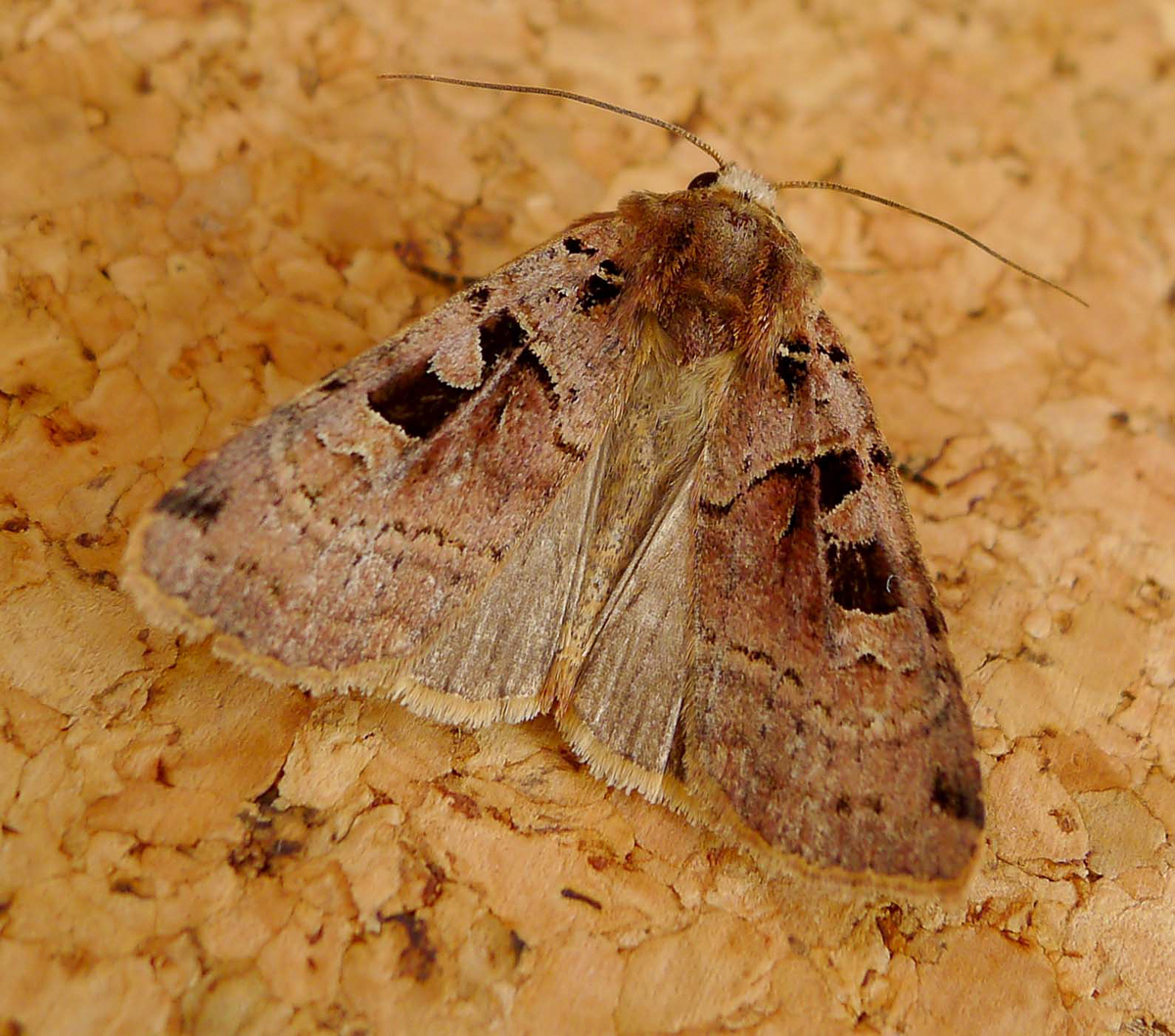
Photo © Gail Hampshire
Xestia ditrapezium (triple-spotted clay) is a moth of the family Noctuidae found in most of Europe, northern Turkey, northern Iran, Transcaucasia, Caucasus, central Asia, from the Altai to Ussuri, Amur, Kuril Islands, northern Mongolia, Tibet, China, Korea, and Japan.
The wingspan is 35–47 mm. The forewing is darker than in Xestia triangulum Hufn., a smooth vinous brown; the dark markings are not so black; the hindwing is distinctly yellowish-tinged.
Differences from X. triangulum:
Adults are on wing from in July.
When they are small, the larvae overwinter while hibernating. After winter, they feed on various food plants, including Vaccinium myrtillus, Prunus spinosa, Salix, Alnus, Betula and Rubus (including Rubus idaeus).
Source: Wikipedia
The primary larval foodplants are birches (Betula spp.), Blackthorn (Prunus spinosa), Bramble (Rubus fruticosus), dandelions (Taraxacum spp.), docks (Rumex spp.), Dogwood (Cornus sanguinea), Hawthorn (Crataegus monogyna), Hazel (Corylus avellana), Honeysuckle (Lonicera periclymenum), Primrose (Primula vulgaris) and willows (Salix spp.).